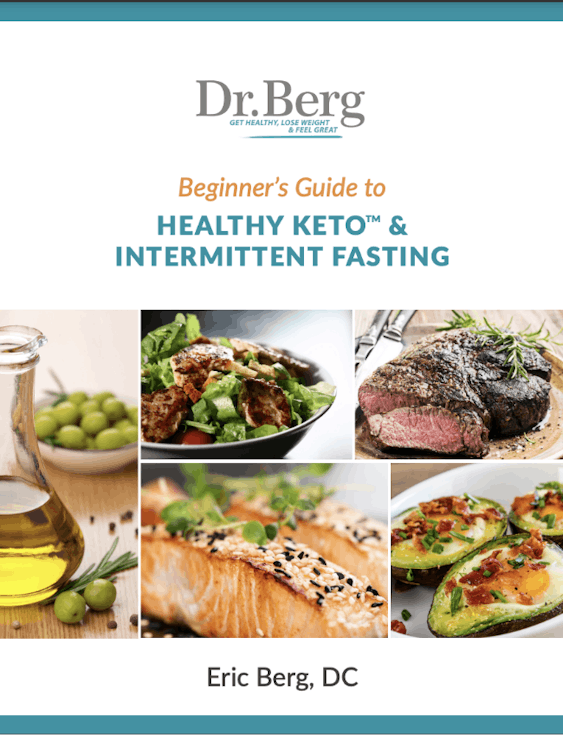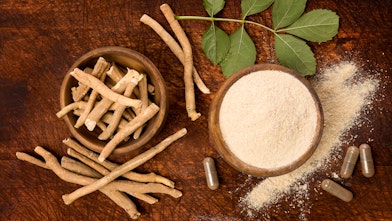This Vitamin MISTAKE is Super Unhealthy!
This Vitamin MISTAKE is Super Unhealthy!
Vitamin E – you've likely heard of it. But have you felt puzzled regarding all of the different forms? The whole tocotrienols vs tocopherols question can definitely lead to confusion.
Vitamin E is not just a single thing, but many things that come in two distinct groupings.
It was in 1964 when it was learned that another vitamin E compound exists, known as tocotrienols. We're going to look into tocotrienols vs tocopherols and the differences, mainly talking about their antioxidant function.
Vitamin E: More Than Meets the Eye
Many think of vitamin E as one. This nutrient is a family of eight fat-soluble compounds. These compounds are split into two main classes: tocopherols and tocotrienols.
Each class has four naturally occurring members: alpha, beta, gamma, and delta. The difference between them exists in the number of methyl groups and where they're located.
All of this adds a different character to each form of vitamin E.
The Molecular Makeup
Tocopherols have a saturated side chain. But tocotrienols possess an unsaturated side chain with three double bonds, also referred to as an isoprenoid chain.
This difference impacts how each interacts with your body and their biological activity. It impacts their bioavailability. It might be hard to follow and really understand how big of a role this really plays.
Tocotrienols are a whole different ballgame. Tocotrienols have been found to hold substantially more antioxidant power.
Tocotrienols: The Underdog with Potential
Tocotrienols are the less common of the vitamin E types. Studies suggest their potent antioxidant activity gives potential neuroprotective benefits, and they show promising compounds.
Tocotrienols differ greatly in this area compared to tocopherols.
Antioxidant Capabilities
Tocotrienols, when measured up against tocopherols, are far more potent antioxidants. Taking just one isolated part of vitamin E can potentially be more harmful. Alpha-tocopherol could act more like a pro-oxidant and create reactive oxygen species.
It's easy to be led down a path to the wrong choices. Antioxidants never appear in isolation within nature. Tocotrienols are wonderful for combatting oxidative damage and lipid peroxidation.

Boosting Brain Health
One remarkable quality of tocotrienols is their effect on the brain. These compounds appear to help after instances of significant stress on the brain, offering a support mechanism.
Research has pointed to tocotrienols ability for preventing neurodegeneration.
They act as guards, sheltering neurons. This protective effect goes further, having applications for those who have a neurodegenerative disease.
They're also beneficial for Alzheimer's and dementia, helping with their potential to lessen the destruction.
Potential Anti-Cancer Properties
Research is pointing to an intriguing side of tocotrienols: a possible cancer-fighting skill. It's like a hidden superpower, getting in the way of cancer's plans.
This anti-inflammatory power becomes a key piece in dealing with cancer and has even been seen in studies done on breast cancer cells and lung cancer.
Many clinical trials are being done to further examine the potential anti-cancer benefits. A tocotrienol-rich fraction is proving to have unique benefits.
Heart Health Advantages
Tocotrienols seem to have an action on statin drugs. They potentially target bad cholesterol involved in making arterial problems.
In a study, six months of damage in arteries started lowering by a bunch. At 18 months, those markers were greatly reduced, close to vanishing.
Think of clean, free-flowing highways, lowering the risk for cardiovascular disease.
Vitamin E helps arteries. Arteries impact blood to the heart and influence the heart muscle itself. Sometimes, heart trouble isn't from clogged roads.
The muscle may not get enough oxygen, leading to damage. Throw in a tough workout, and oxidative damage goes up. That is why having tocotrienols after pushing the limits during a workout makes sense.
Tocopherols: Readily Available
Should we dismiss tocopherols? Definitely not. Tocopherols come with their own strengths.
They're found more widely in the food sources we eat. Green vegetables with chlorophyll are rich in tocopherols. Nuts and olive oil have substantial amounts, making them easy to add to the daily intake menu.
Where Tocopherols Shine
Tocopherols hold down the fort when guarding cell membranes. Their antioxidant powers are well-studied, showing protection.
They keep each cell operating at its best, helping them to push back on environmental pressures, though not to the extent of tocotrienols.
The chemical structure, with its chromanol ring, is unique. Much of the tocopherol biosynthesis takes place on the membrane surface.

Integrating Vitamin E into Daily Life
Getting your hands on tocotrienols can seem like searching for a rare item. One notable source is an exotic-sounding annatto. Palm oil and rice bran house a bunch of tocotrienols.
You want to go for the unrefined red palm oil, keeping the nutrients. Some suggest combining both tocotrienols and tocopherols at once could cause competition between them. More findings might surface.
Researching is heavily focused on the benefits of clearing out blocked pathways in our bodies. Vitamin E doesn't do things alone. It's believed that a transfer protein helps transport vitamin E.
Partnering With Other Nutrients
Working hand-in-hand with vitamin C and other nutrients makes these antioxidants keep working longer. Each is connected together. Focusing too narrowly on just one may lead to unexpected issues.
The balance is vital. Many products out there contain synthetic vitamin E, so you need to be sure what you're consuming. Be sure to choose products that include naturally occurring tocotrienols.
Feeling different after working out isn't strange. I choose a tocotrienol mixture. I find personally they fit in better to deal with the situation.
Knowing nutrition fundamentals allows choices in vitamins to solve potential concerns. There may be predispositions to watch out for that require consideration for what you want to avoid.
One must keep in mind their own blood sugar and other personal health metrics.
Conclusion
So you see, the term vitamin E has many forms, each having its role to play. When discussing tocotrienols vs tocopherols, one is superior when considering the total strength.
Yet each has its specific strengths, with neither entirely better than the other.
It really comes down to the individual needs. Though much research has been done, even involving animal studies, more and more data will likely keep appearing.
The most important lesson here might be the simple principle of variety to help support different body systems.
Be mindful not to exceed any tolerable upper intake level that has been established. A recommended upper intake exists. Be aware of your personal intake level so that you do not reach that upper intake level.
FAQs about tocotrienols vs tocopherols
Which is better, tocopherol or tocotrienol?
Tocotrienols are typically seen as having stronger antioxidant capabilities than tocopherols. But both are really vital in vitamin E functions and have their own biological functions.
They both have a chain attached but of different types.
What is the healthiest form of vitamin E?
The best form really comes down to needs and objectives. Tocotrienols could stand out because of how they potentially boost cardiovascular well-being and other biological activities.
They're also showing great potential in a clinical trial or two.
Though naturally occurring tocotrienols and tocopherols can be found, most supplements are a form of vitamin supplementation. Be sure to choose natural forms and not something synthetic.
Does all vitamin E have tocotrienols?
No, vitamin E doesn't universally include tocotrienols. Vitamin E consists of eight compounds split into tocopherols and tocotrienols. Each naturally occurring stereoisomer has a different impact.
Are tocotrienols good for the kidneys?
Exploring their part in renal function, some research has linked tocotrienols with good health and reducing inflammation, which supports how well they perform.
More exploration helps reveal connections in-depth. They may potentially act on a key enzyme within the body.
The European Food Safety Authority, also called the EFSA, has done much research into the topic. Their scientific committee on food safety continues to research.
The EFSA is a valued food safety authority that provides the public with great data.
Previous blog
End Dry Cough in 5 Minutes – Here’s How!
Popular
08/21/2024
55.7K views
02/23/2025
46.8K views
11/18/2024
281.1K views
03/18/2024
11/21/2022




